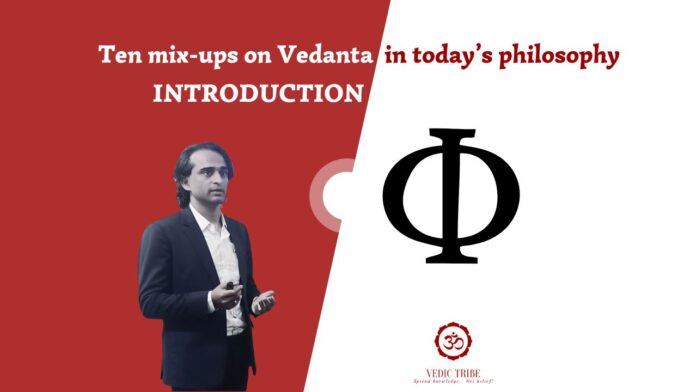Vedanta: A Philosophical Exploration
Vedanta: The intricate web of Vedanta (essence of Vedas) has been woven with fine threads of philosophical and spiritual insights. However, due to historical and linguistic factors, many of these profound concepts have been misunderstood and misrepresented.
Western translation: A significant contributor to this misunderstanding is the translation of Sanskrit texts by Western scholars, who often lack a deep understanding of the cultural and spiritual context of these ancient texts.
Beyond academics: Vedanta emphasizes the importance of direct experience and spiritual practice alongside intellectual understanding. Some Western scholars focus solely on the philosophical doctrines, neglecting the practical and experiential aspects of Vedanta. This leads to a purely academic understanding, missing the transformative potential of the philosophy.
Vedic Tribe invites you to embark on this enlightening journey through Vedanta. We’ll delve into ten common mix-ups about Vedanta and clear the air.
We shall navigate the intricate corridors of philosophical thought, tracing the lineage of ideas from ancient schools to the contemporary world, engaging with the timeless questions that have captivated humanity for millennia.
Dispelling misconceptions:
Common vocabulary: We will delve into the common vocabulary shared by both philosophy and Vedanta, identifying terms that, when mistranslated or misinterpreted, can obscure the true meaning and essence of Vedic teachings. By replacing these terms with their appropriate Sanskrit equivalents, we hope to foster a deeper appreciation for the original Vedic texts.
Spiritual significance: One such example is the word “sacrifice,” often used to translate the Sanskrit term “yajna.” This translation has led to a significant misunderstanding of the Vedic concept. By understanding the true meaning of “yajna” as a sacred ritual or offering, we can begin to grasp the deep spiritual significance behind this practice.
Key Points:
Comparative Analysis: We will explore the similarities and differences between philosophical and Vedantic concepts.
Language Matters: We will highlight the importance of accurate translation and the use of appropriate Sanskrit terms.
Deeper Understanding: By clarifying misconceptions, we will provide a clearer understanding of Vedic teachings.
Practical Application: We will encourage readers to incorporate Vedantic principles into their daily lives.
Lets clear the air:
Vedic Tribe is happy to bring you clarity on these ten common mix-ups:
1. Dualism and Sri Madhwacharya’s teachings
2. Monism and Sri Shankaracharya’s teachings
3. Mind and Manas
4. Sacrifice and Yajna
5. Hymn and Mantra
6. Priest and Brahmin
7. Theist and Astika
8. Illusion and Maya
9. Religion and Dharma
10. Creation and Srishti
In the next article, we will discuss the first mix-up – “Dualism and Sri Madhwacharya’s teachings”.
Our intention is to create enough curiosity in you to enable you to study Vedanta with clarity and adopt its teachings in your day-to-day life.
All the best.
Madhwesh K
Vedic Tribe

